Abstract
This study concentrates on an important health policy question: the impact of dental insurance on the demand of adults for dental services. Demand equations for individuals are estimated from a systematic random sample of 4,173 families with complete information on their dental claims (insured through Pennsylvania Blue Shield) and survey data. The principal contributions of the research are twofold: (1) to provide rigorous, large-sample estimates of the demand for dental services of insured individuals--providing a complementary set of "natural" experiment results to the randomized experiment results of the RAND Health Insurance Experiment--and (2) to estimate the incremental effects on dental care demand of certain factors related to adverse selection. The study is a companion to a previously published study of children by the same authors. Generally, the analysis shows relatively small money price elasticities of dental care demand among this insured adult population (ranging from -.01 to -.266 across specific types of service). Given a finding that total expenditures for Basic services are 37 percent and 90 percent higher, respectively, for community-rated (versus experience-rated) primary subscribers and insureds, we conclude that differential adverse selection between community- and experience-rated groups accounts for significant differences in dental demand.
Full text
PDF
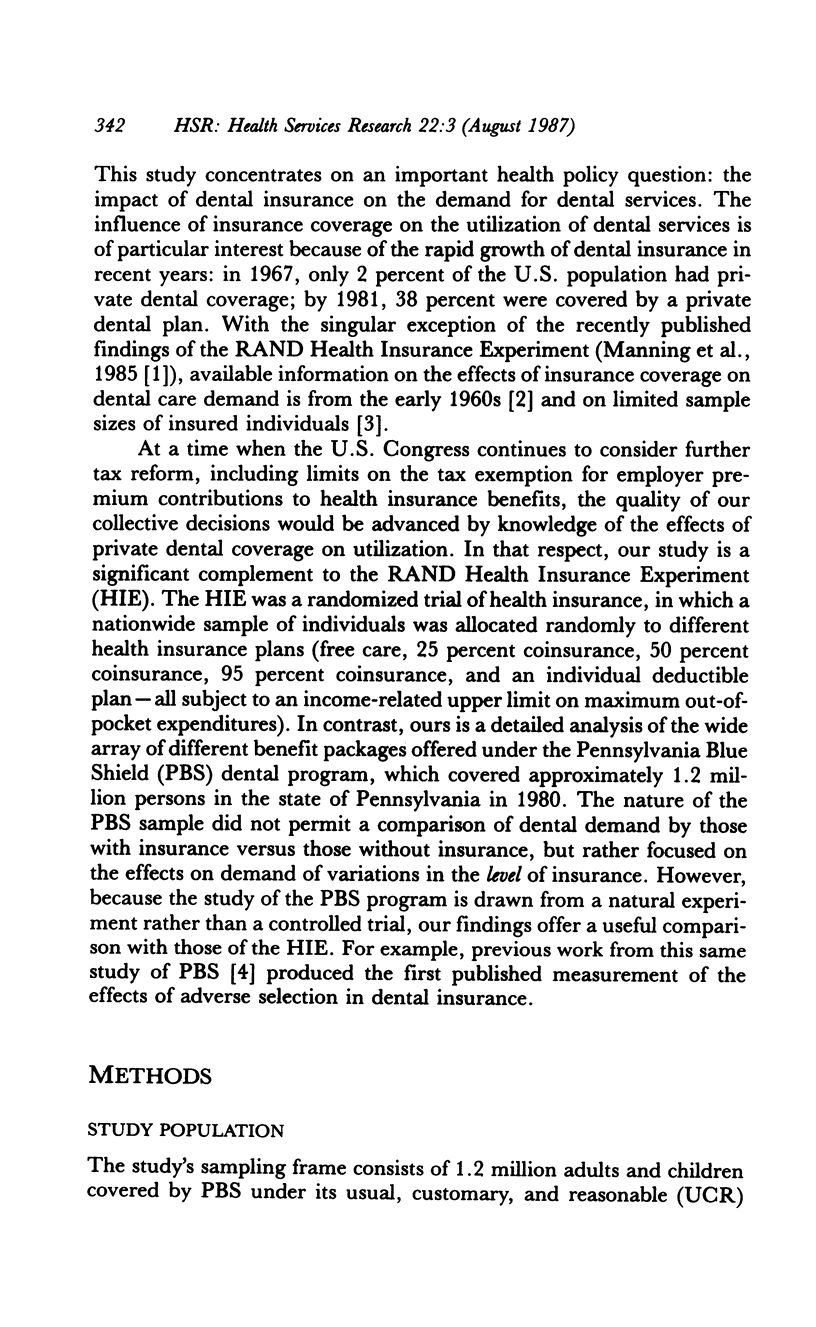
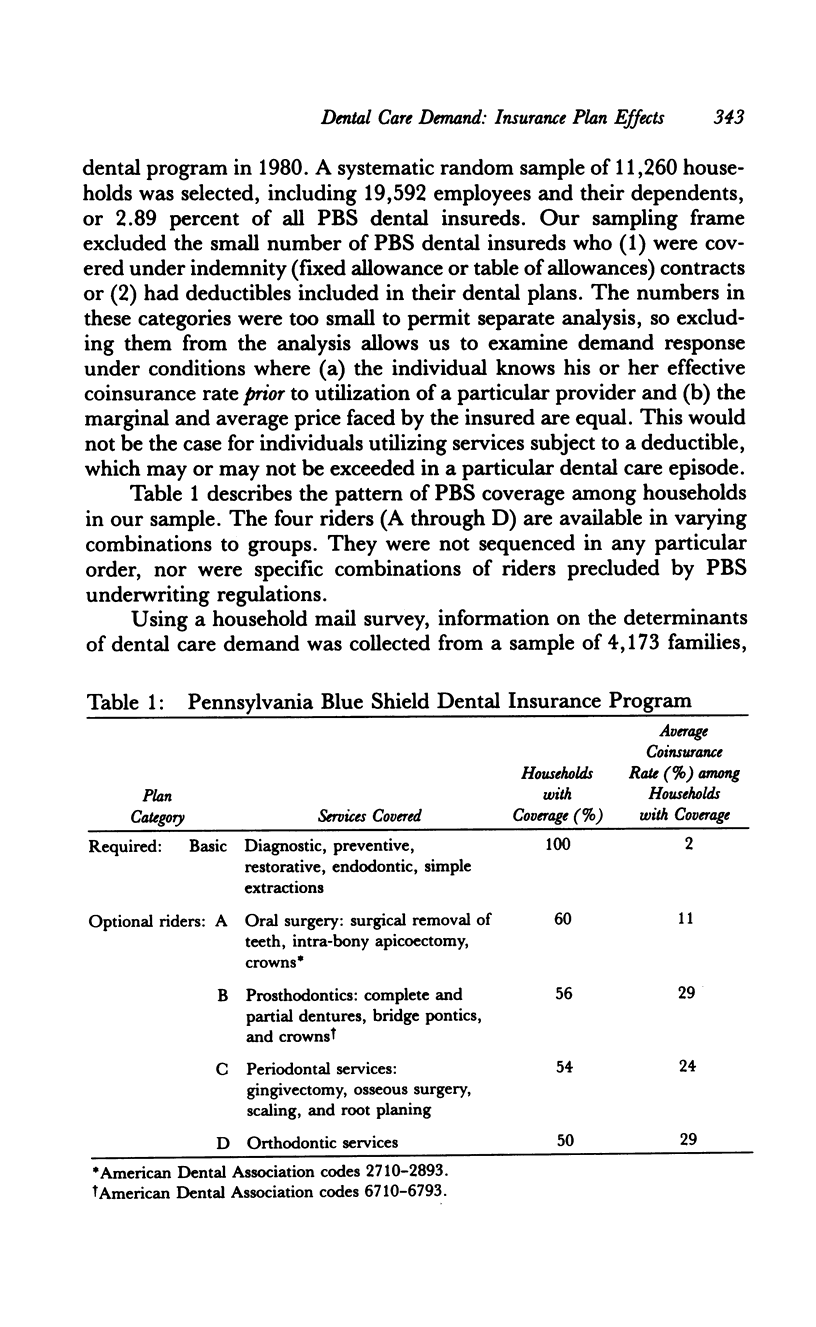
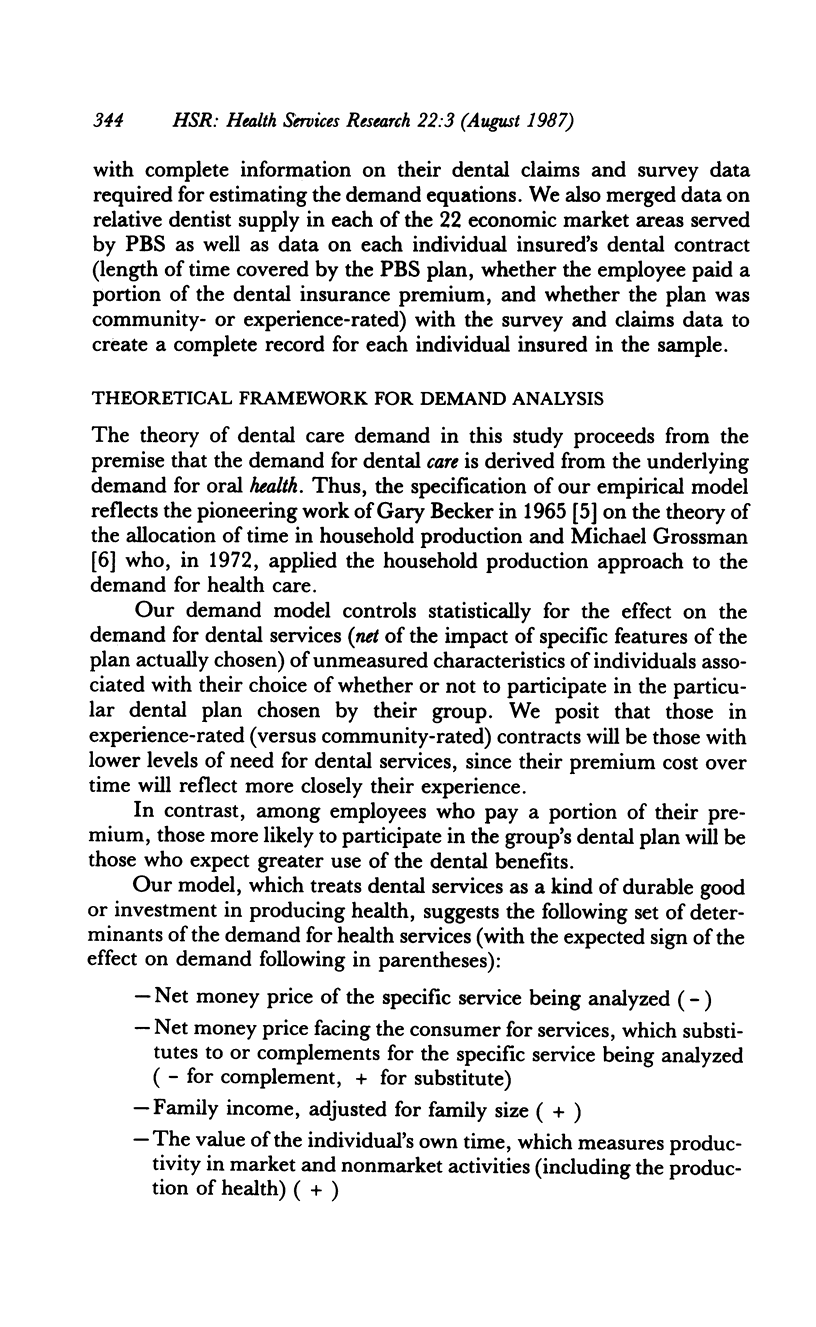
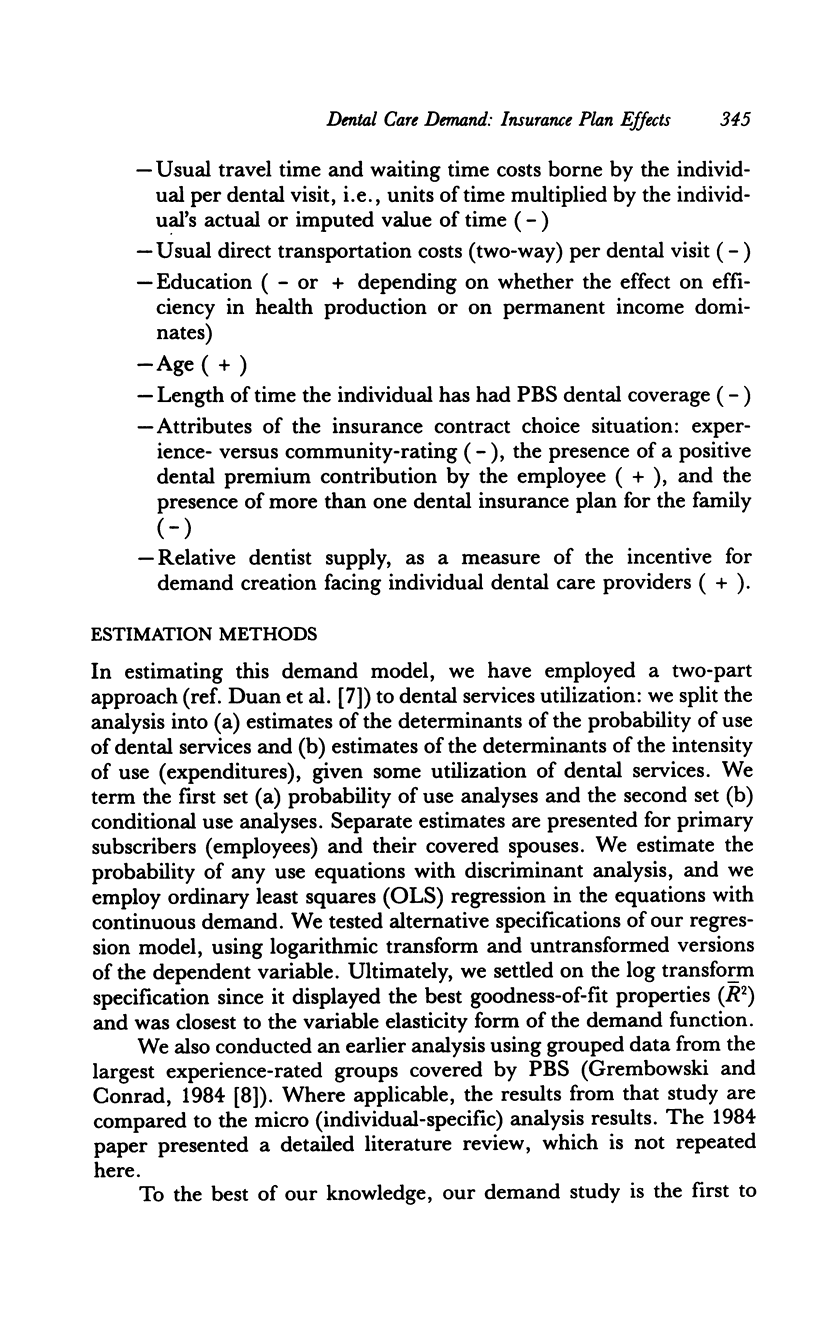
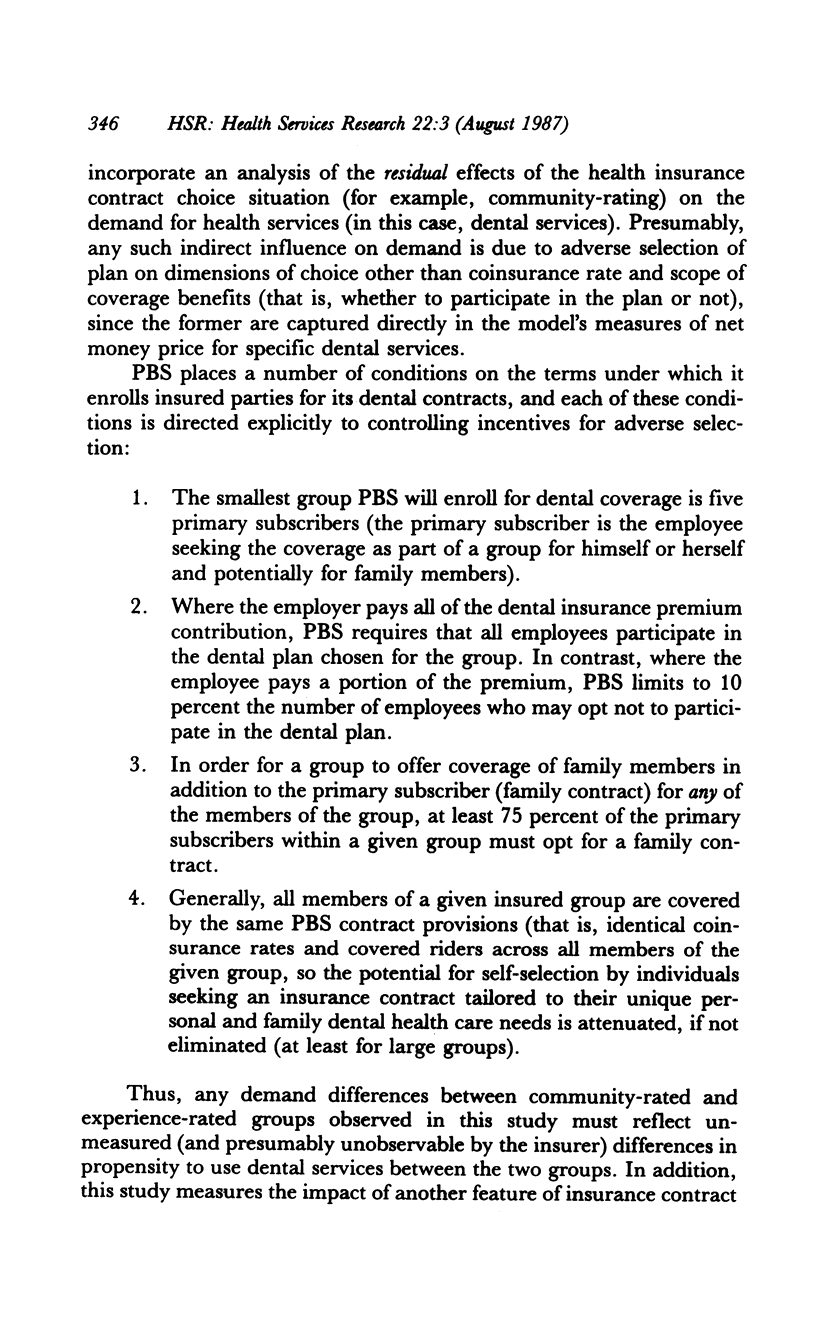
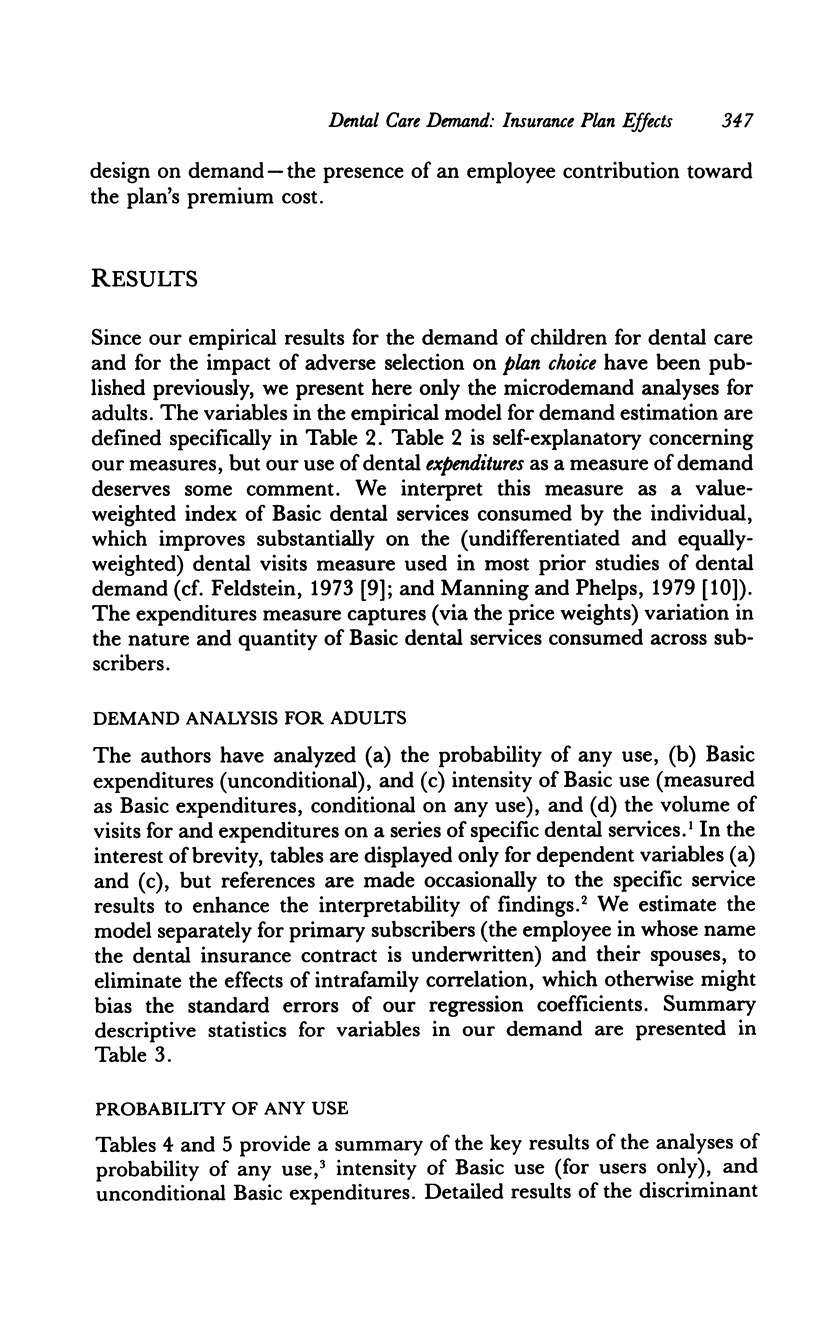
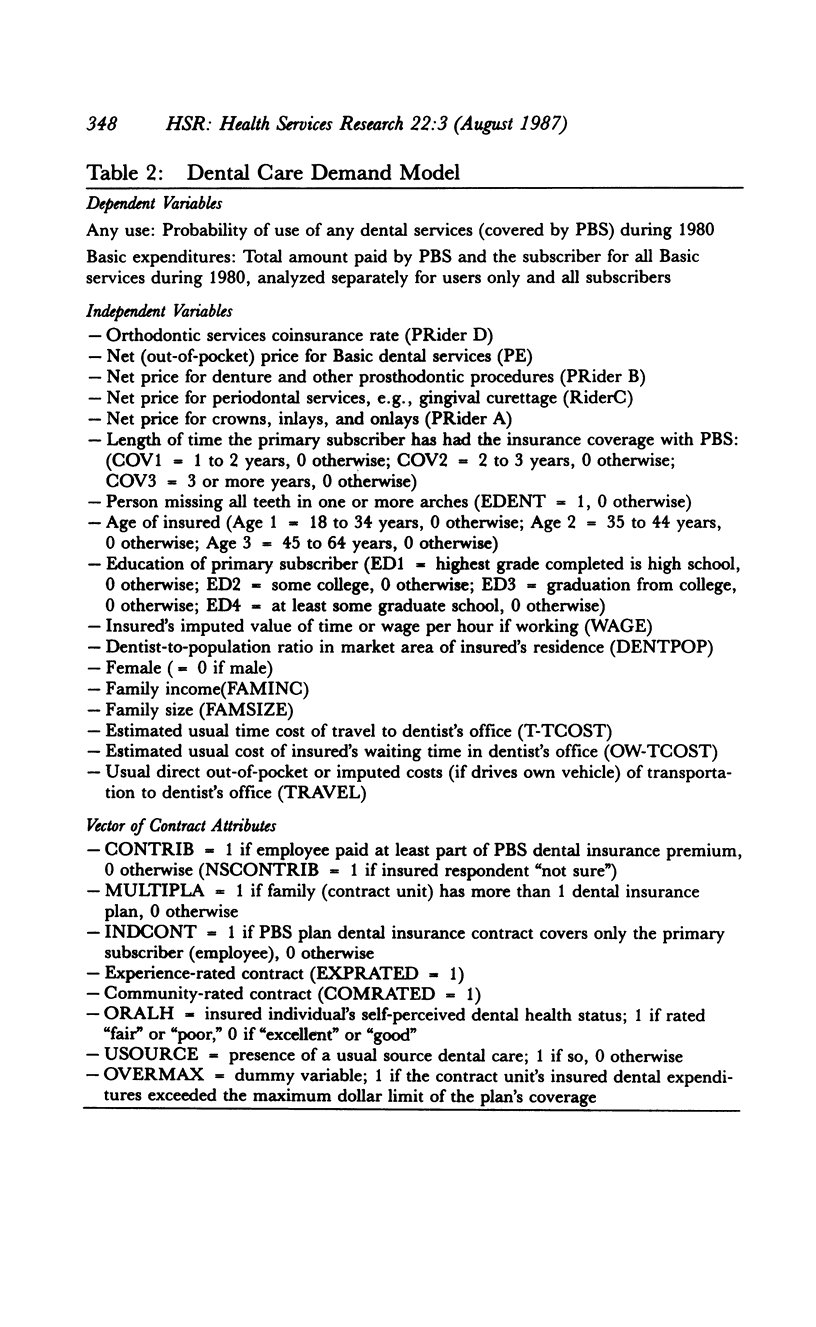
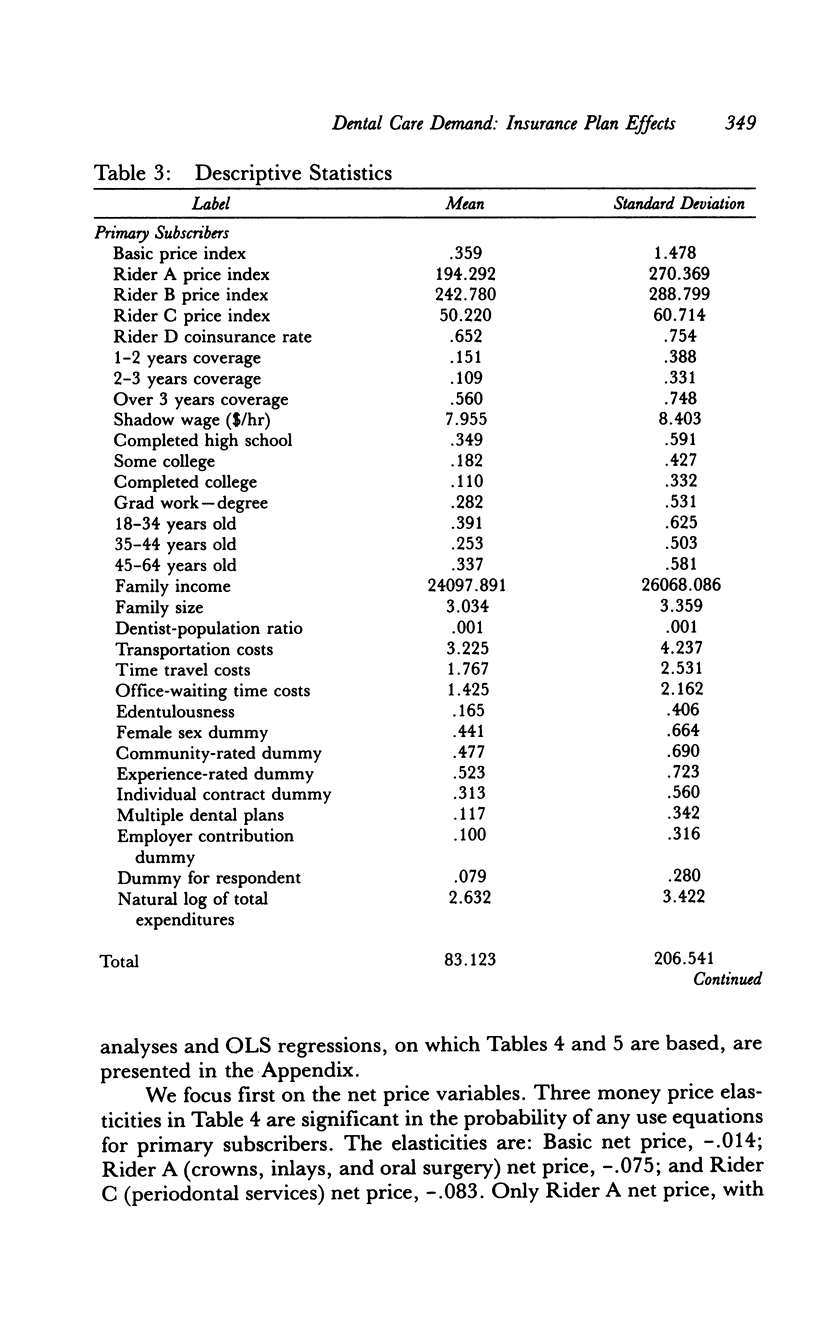
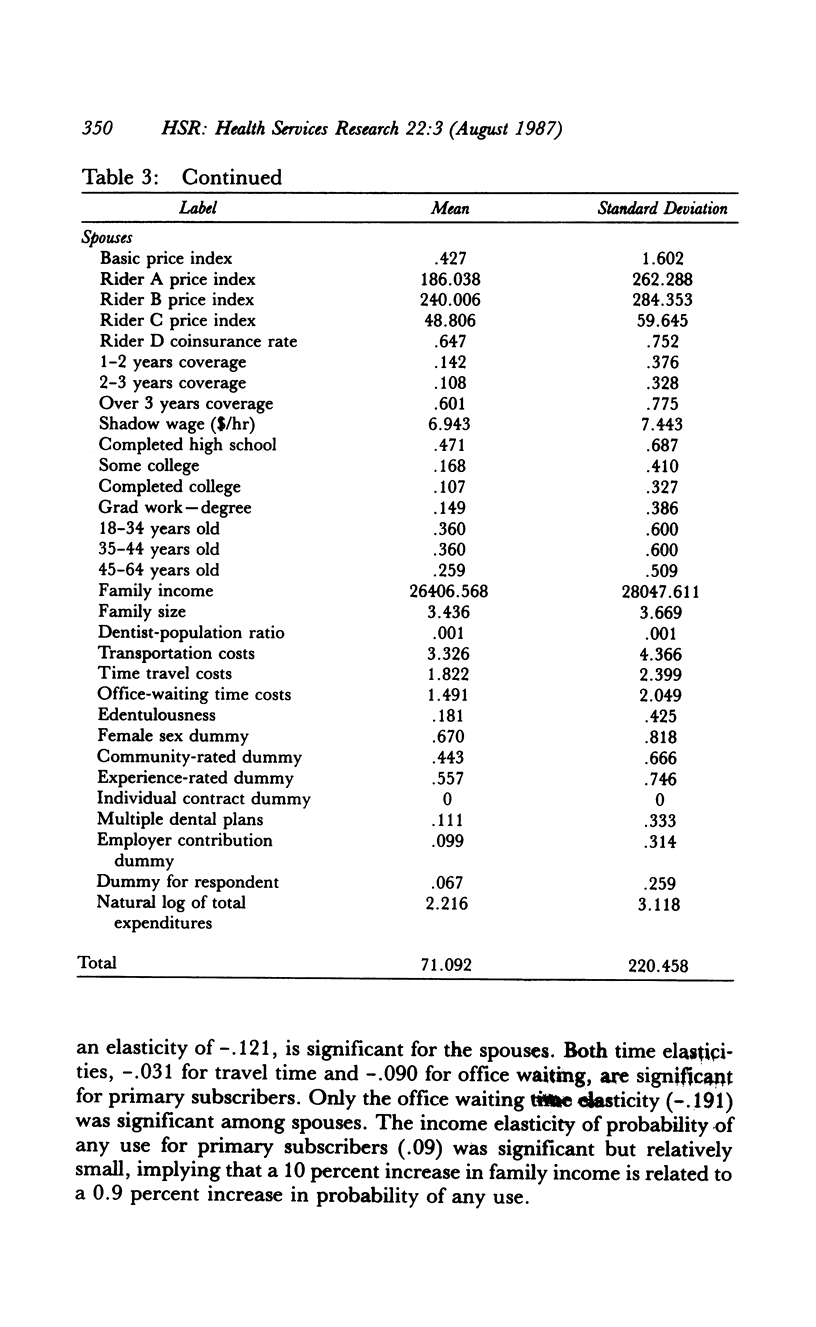
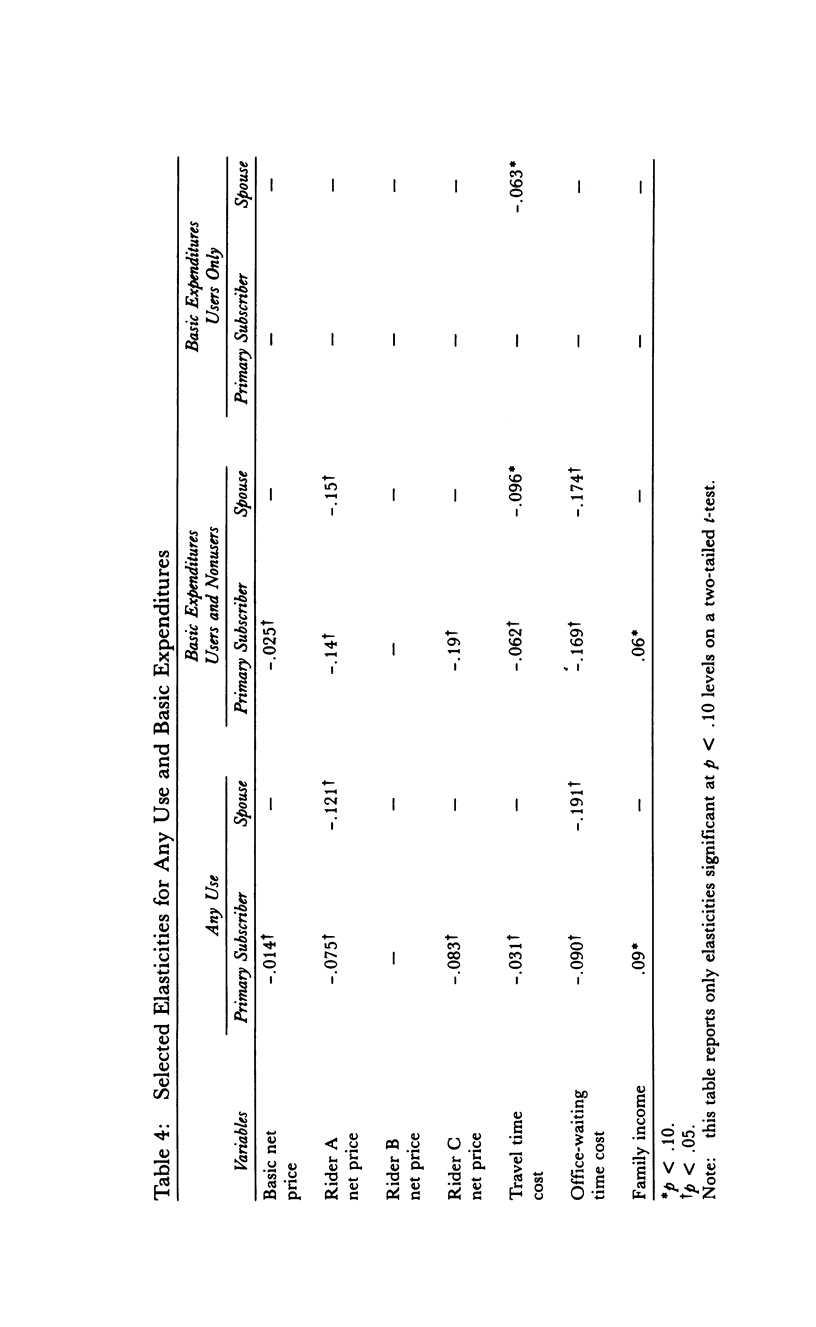

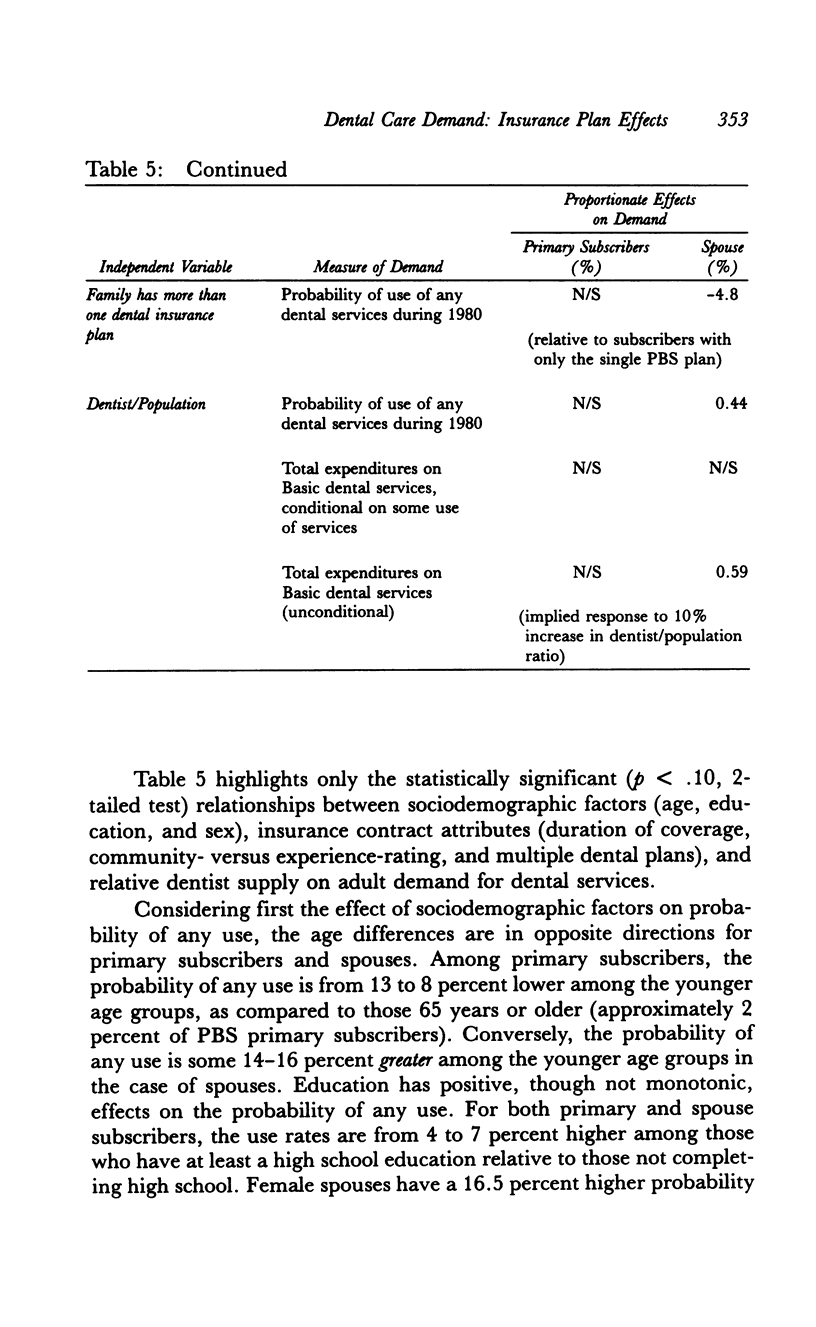
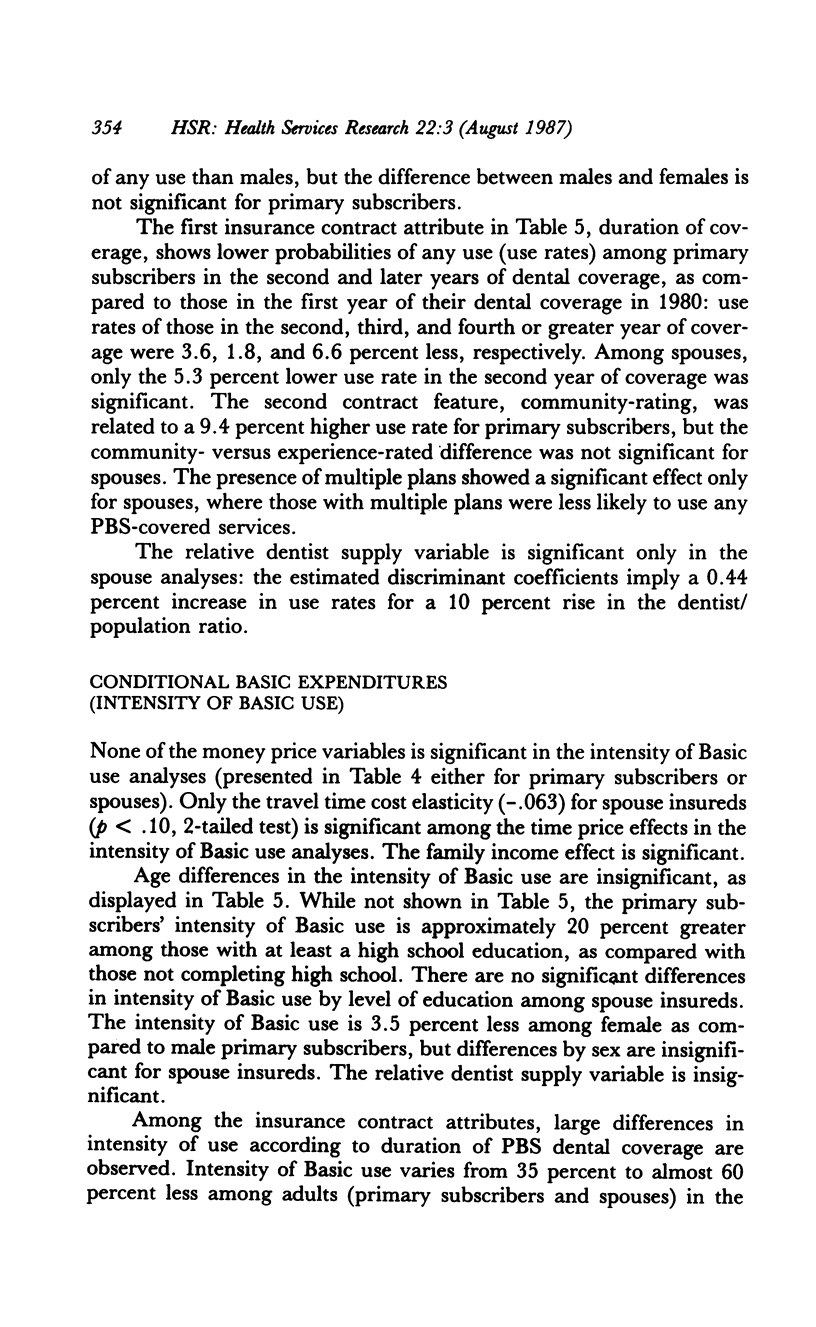
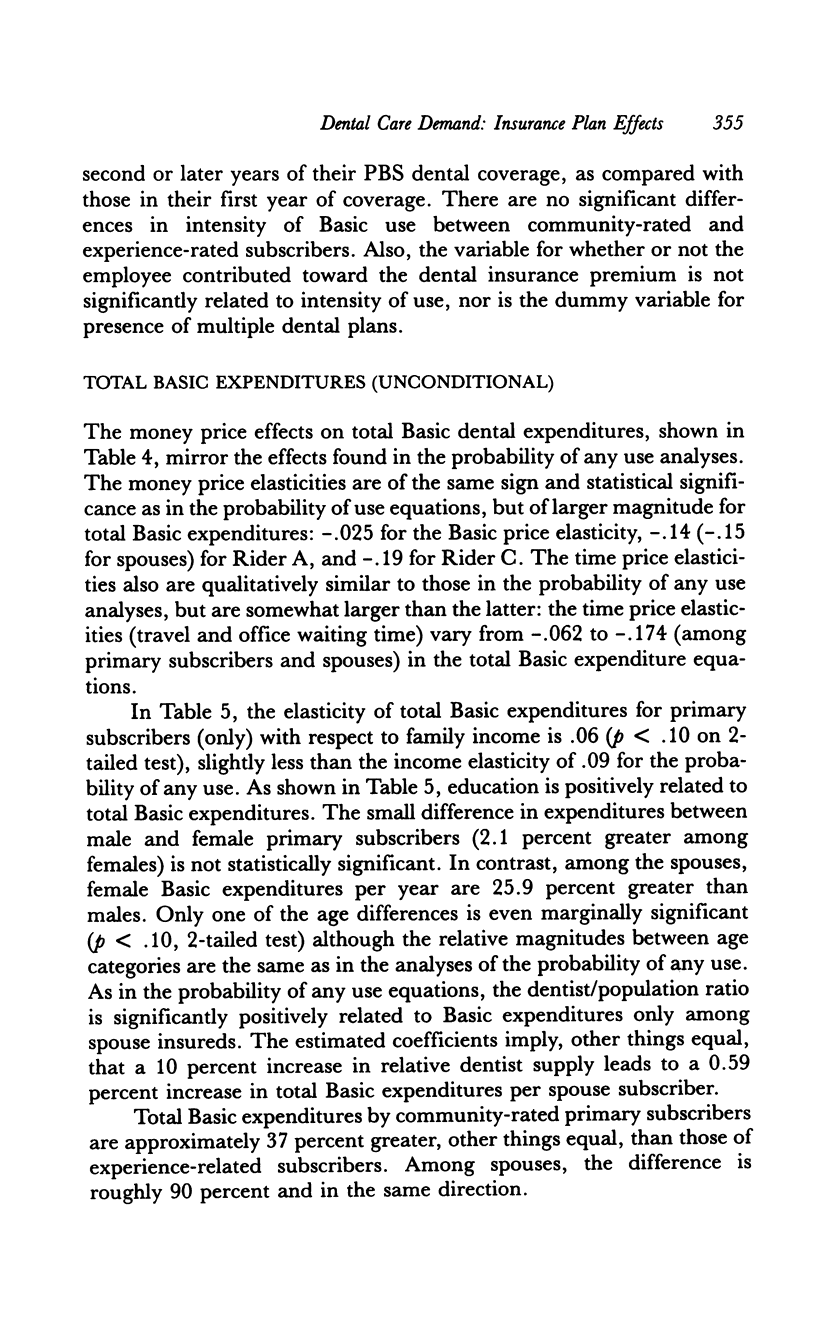
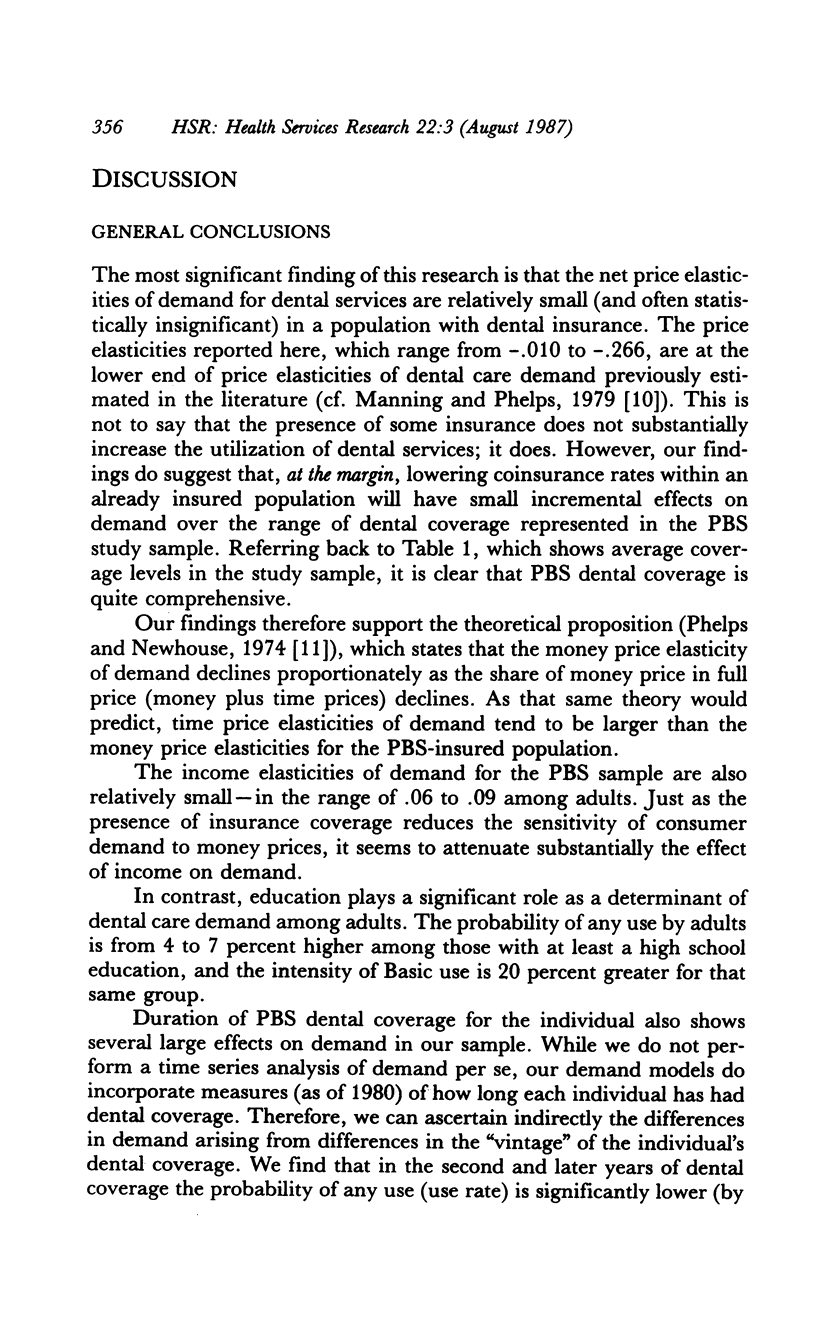
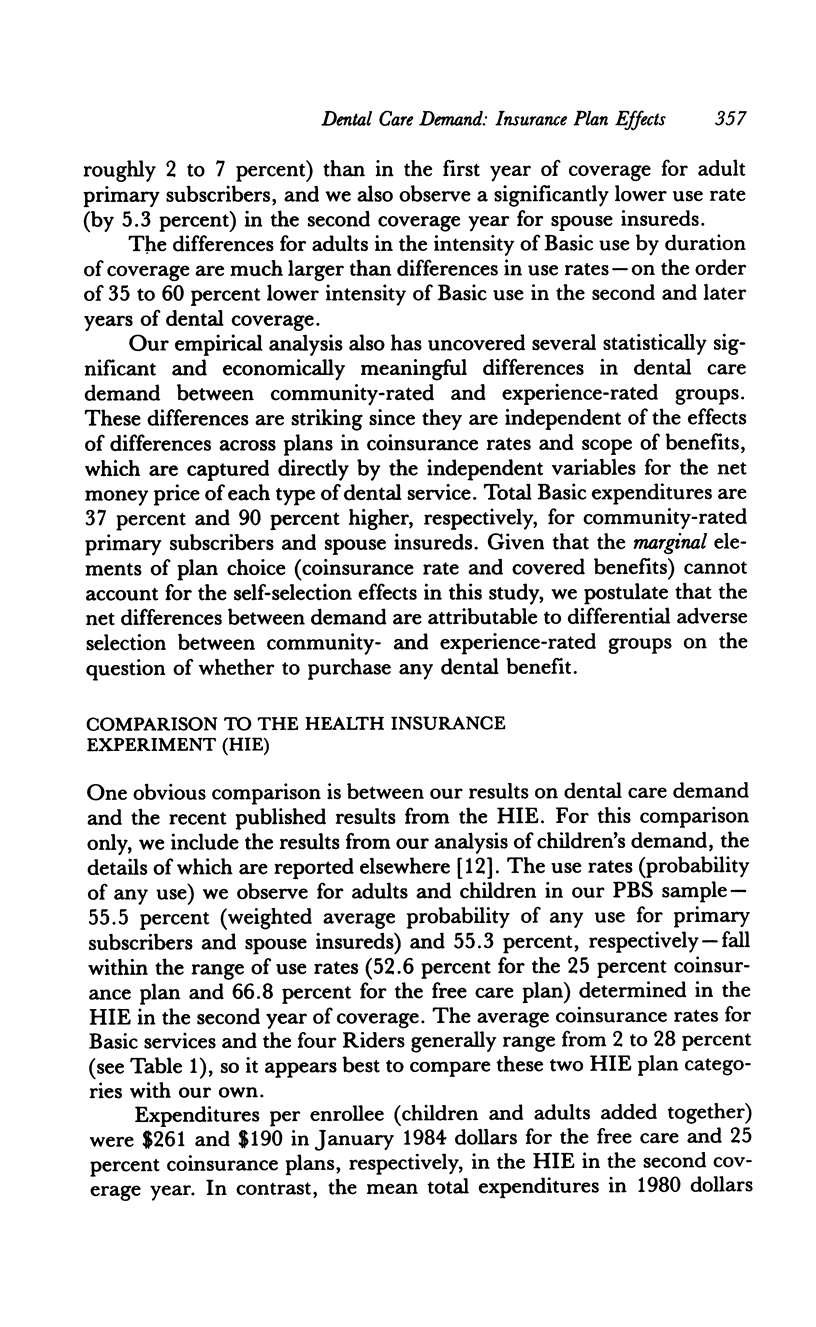
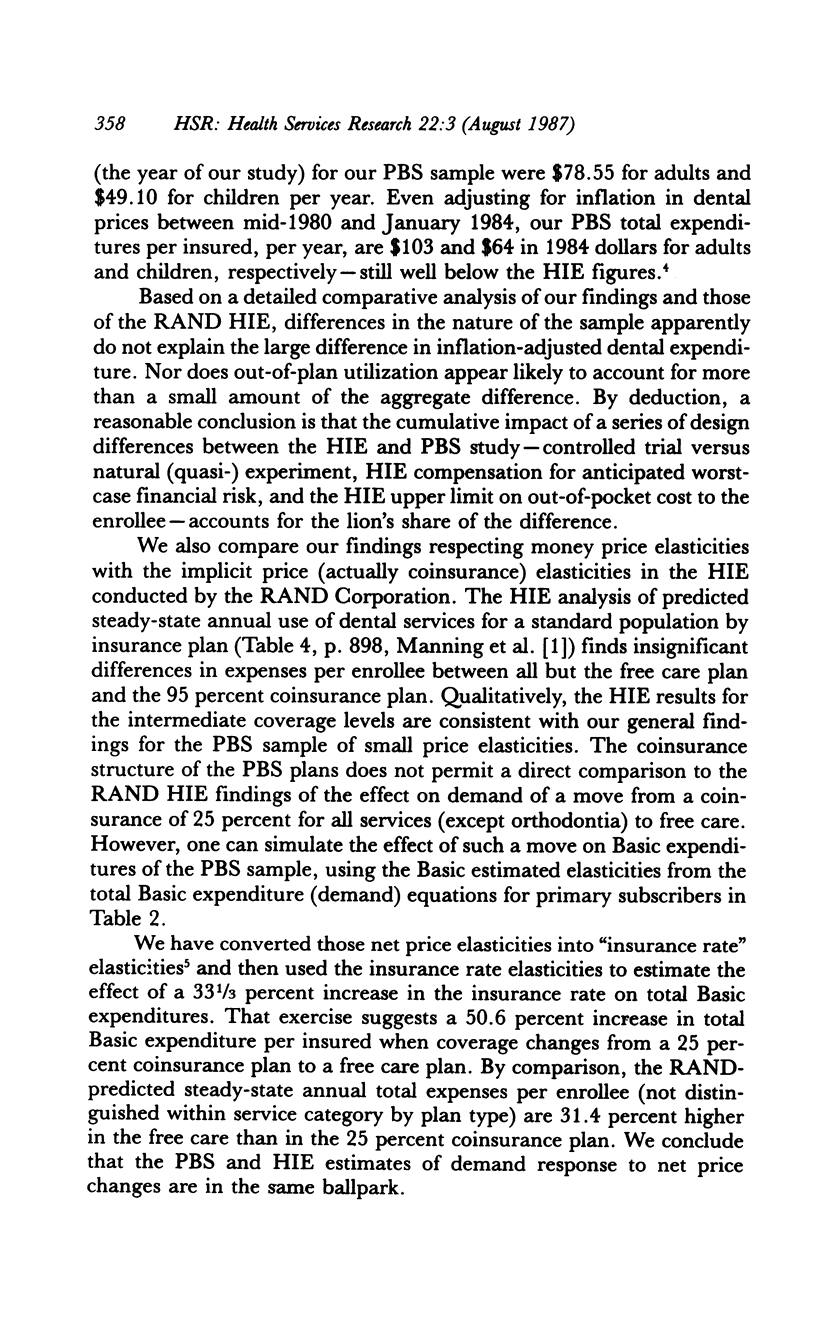
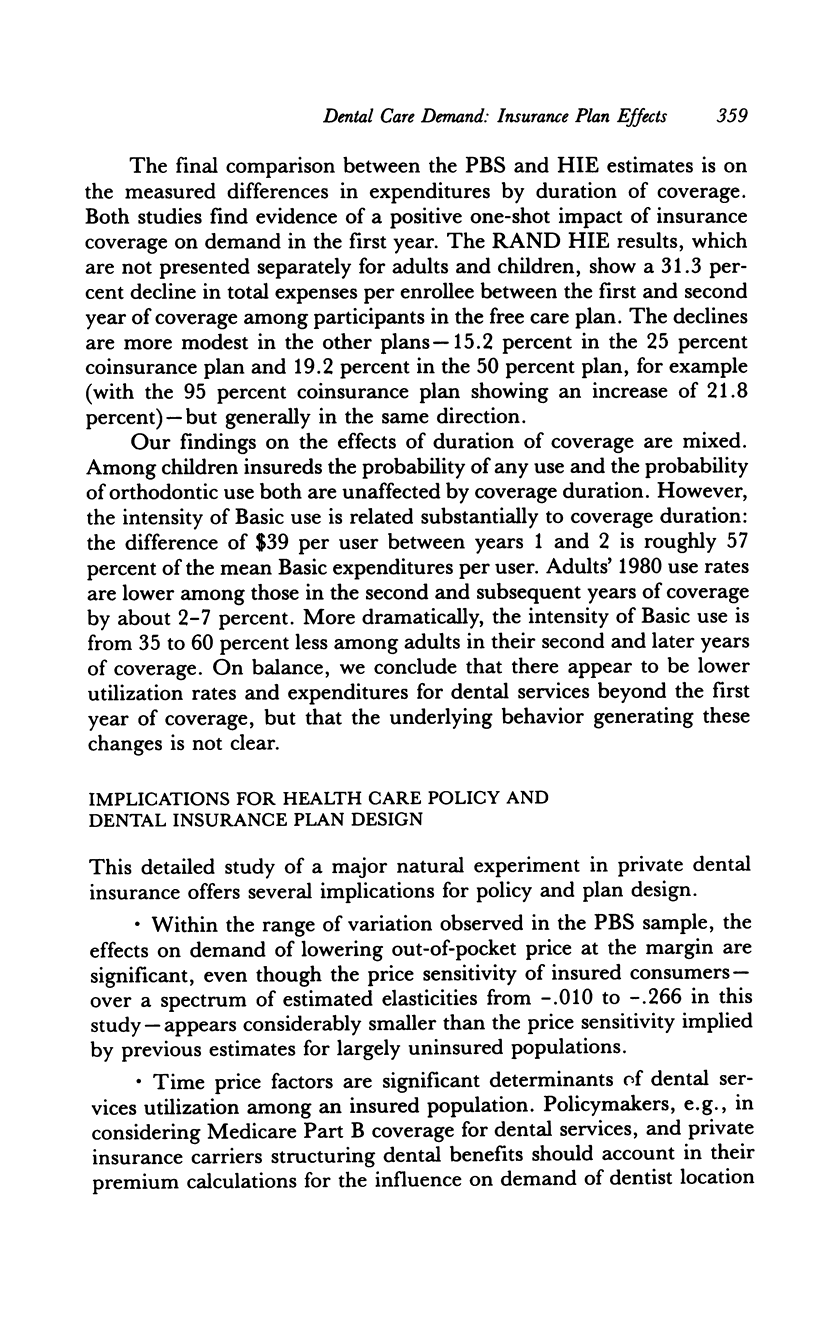
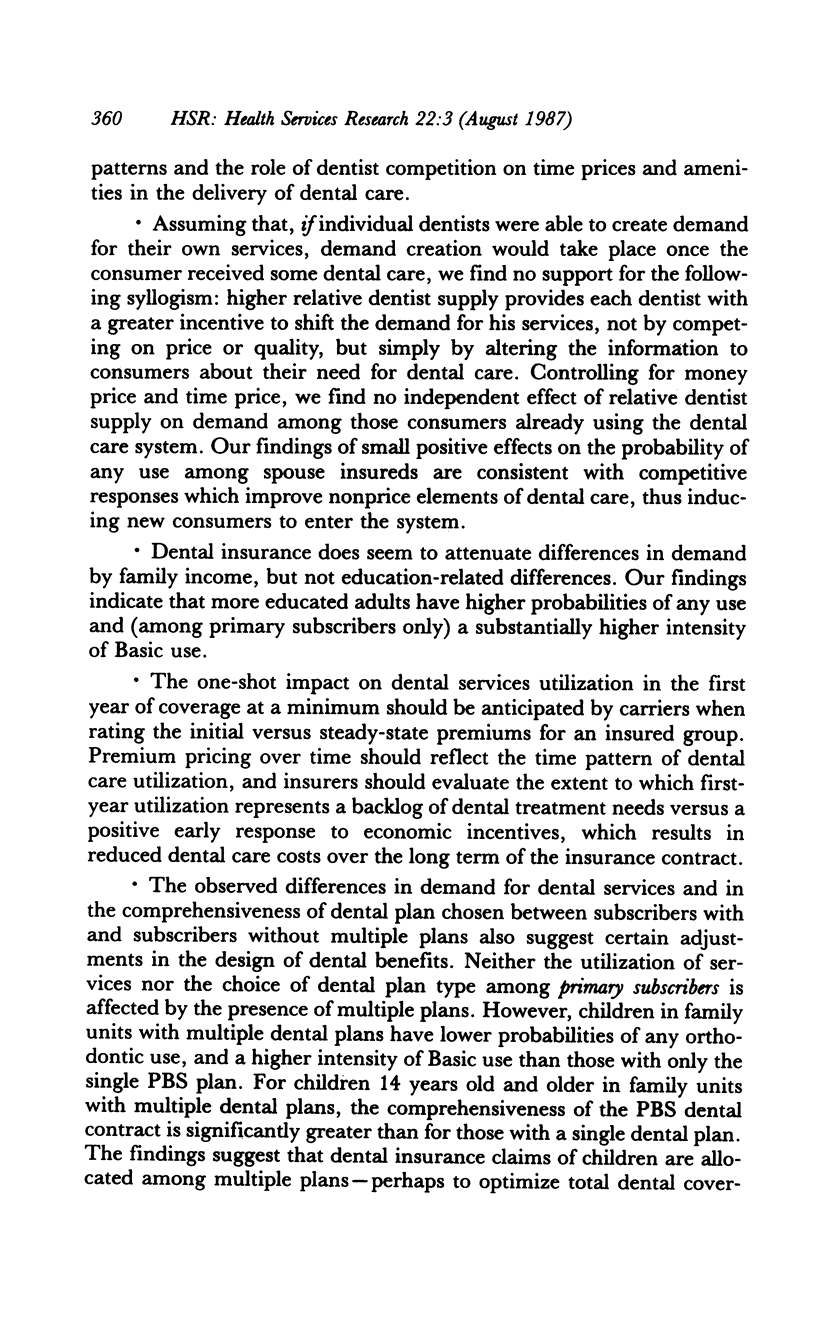
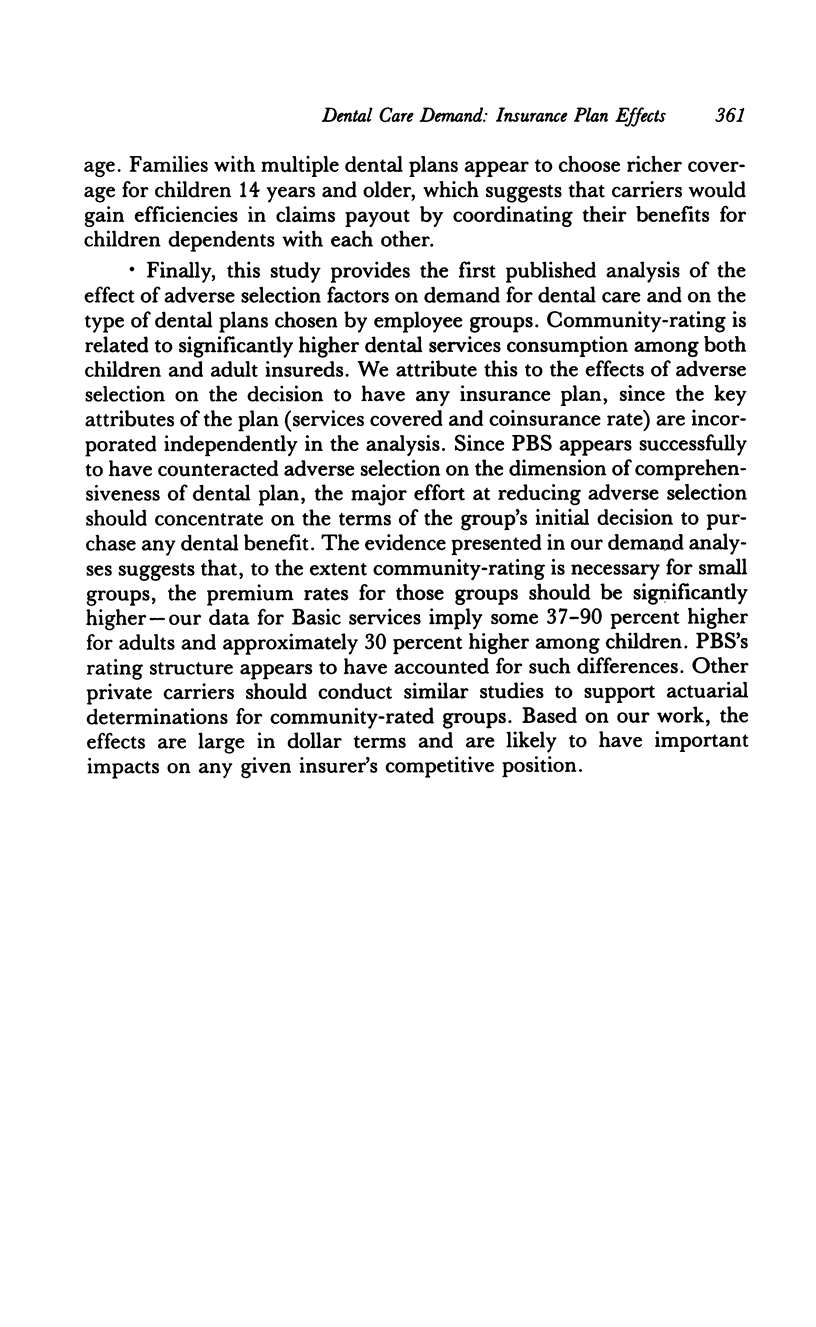
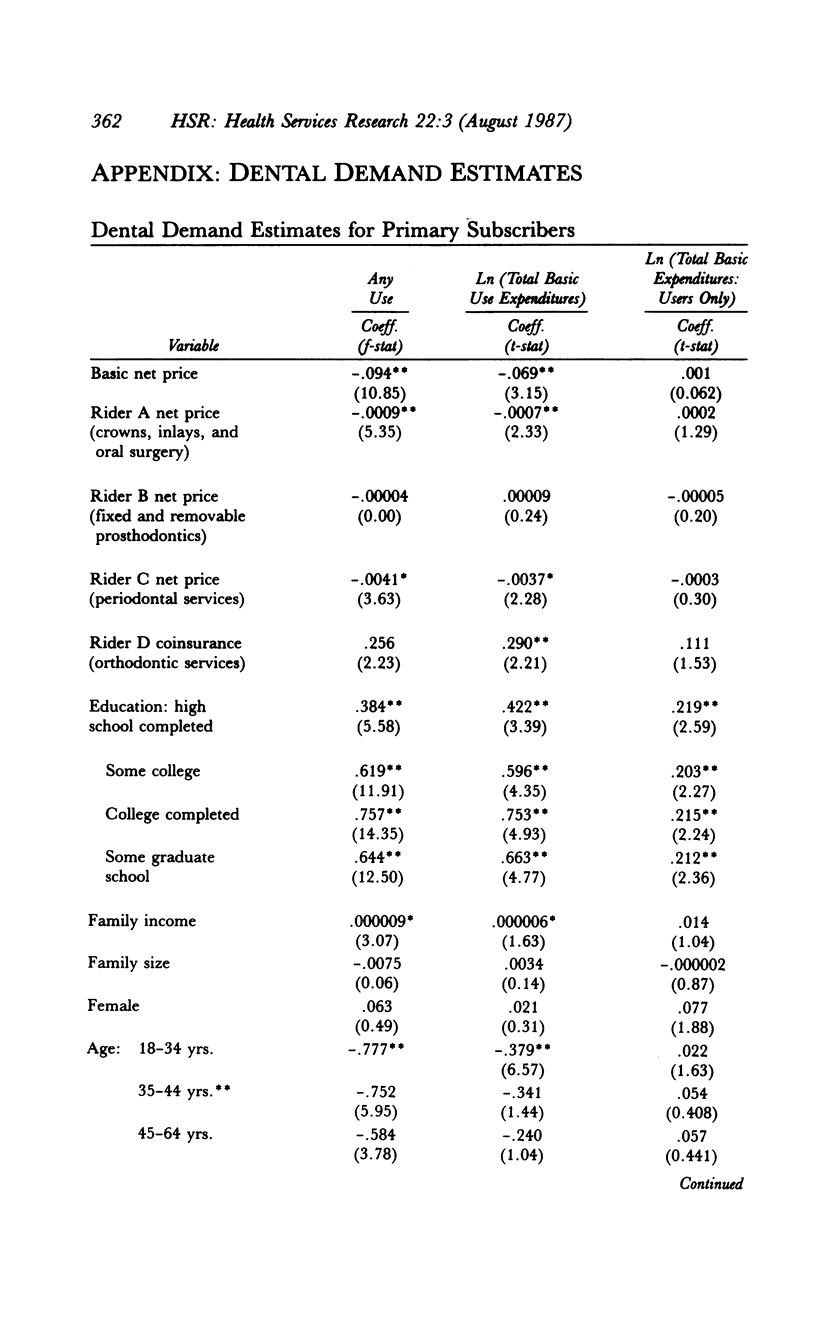
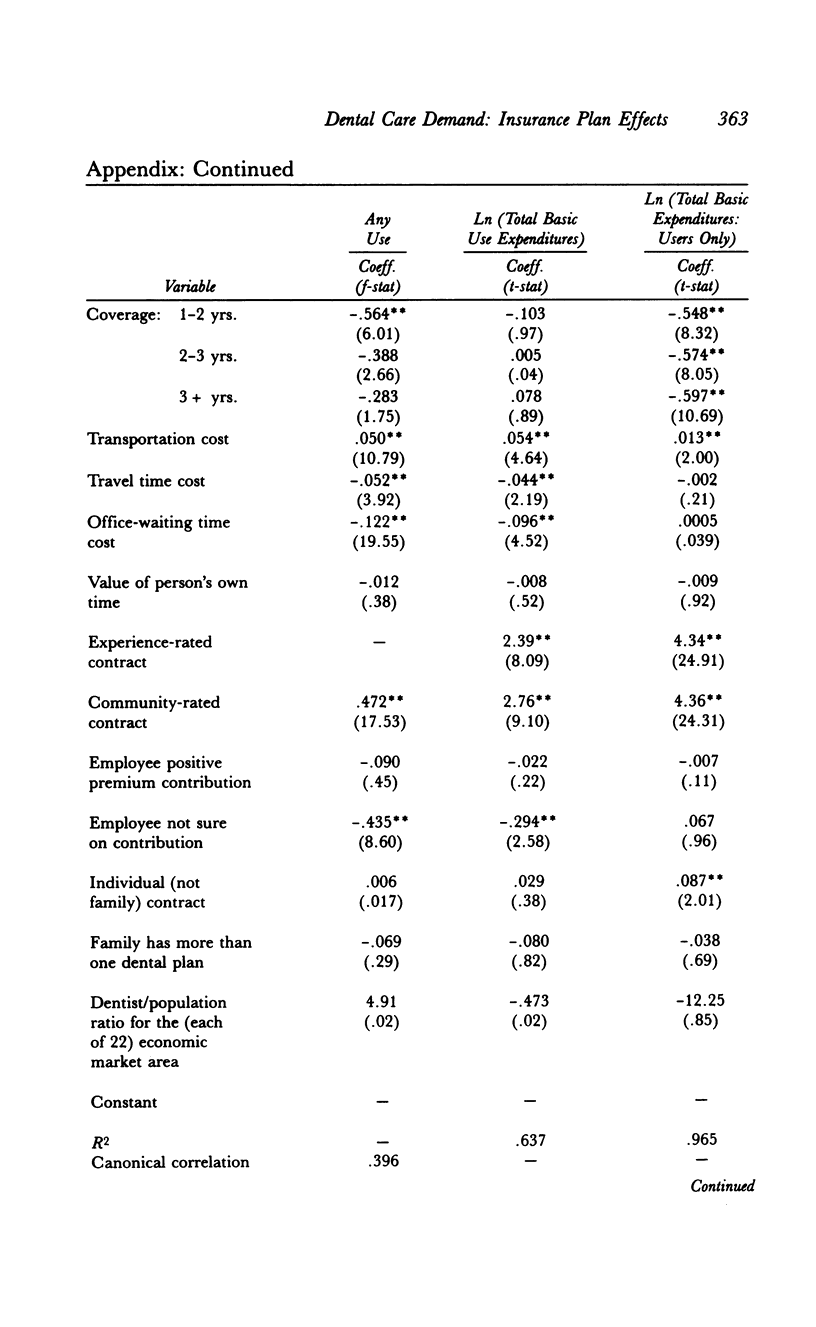
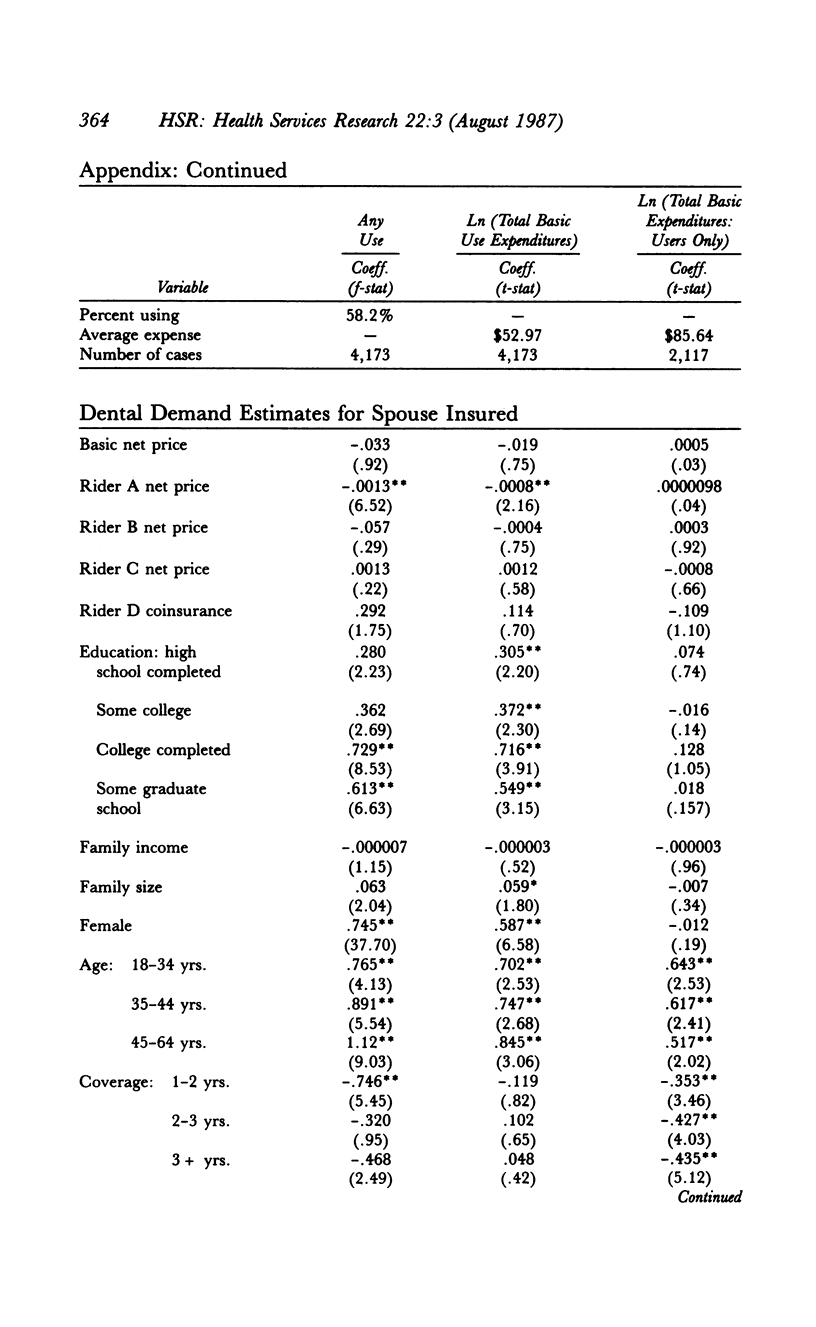
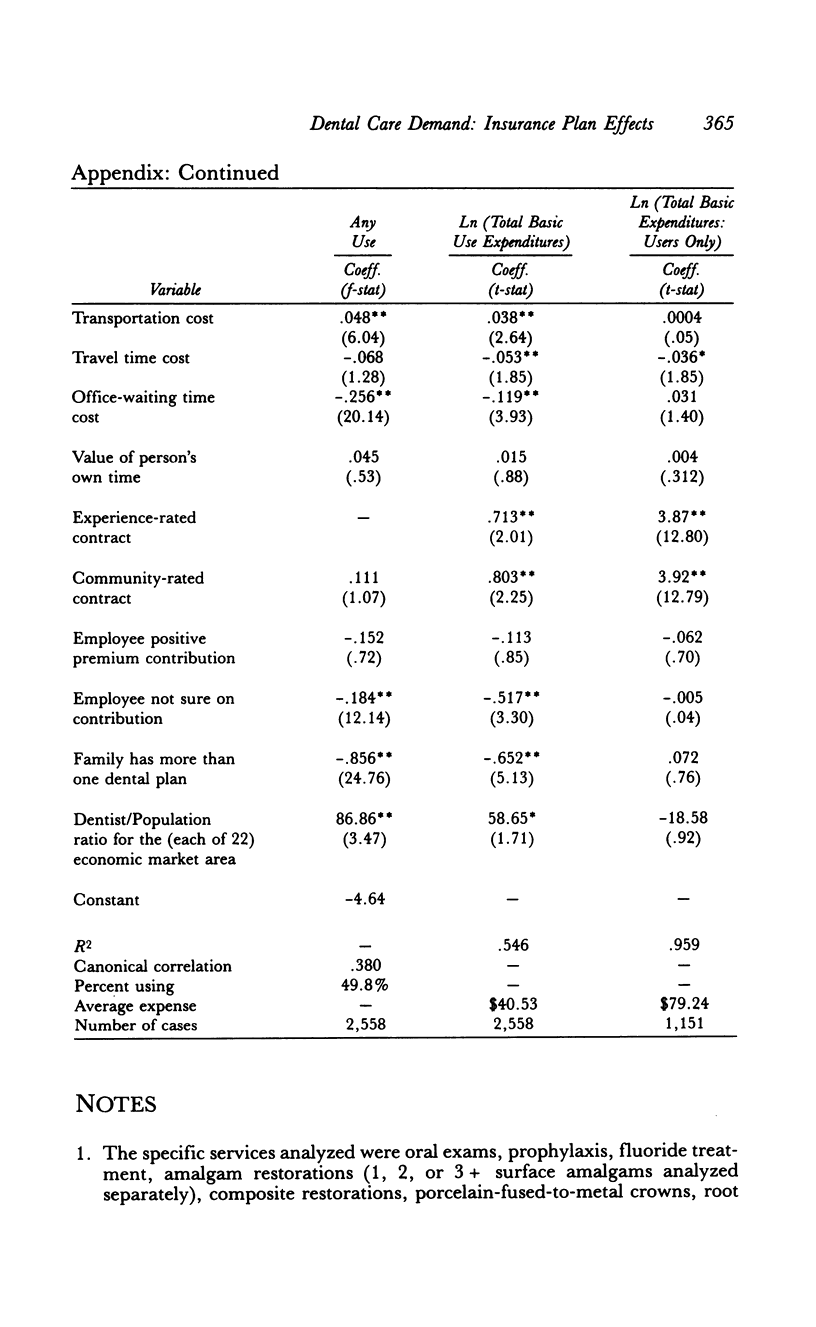
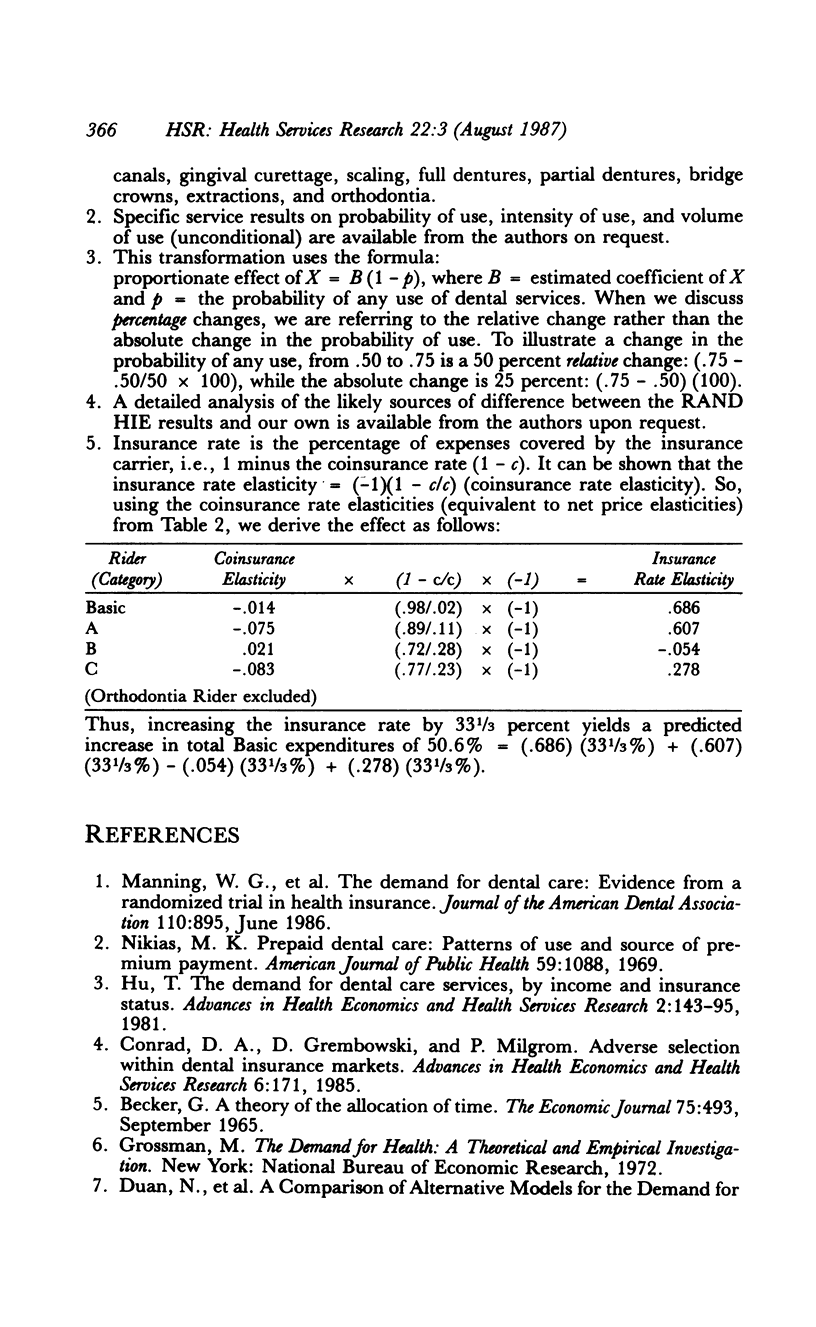
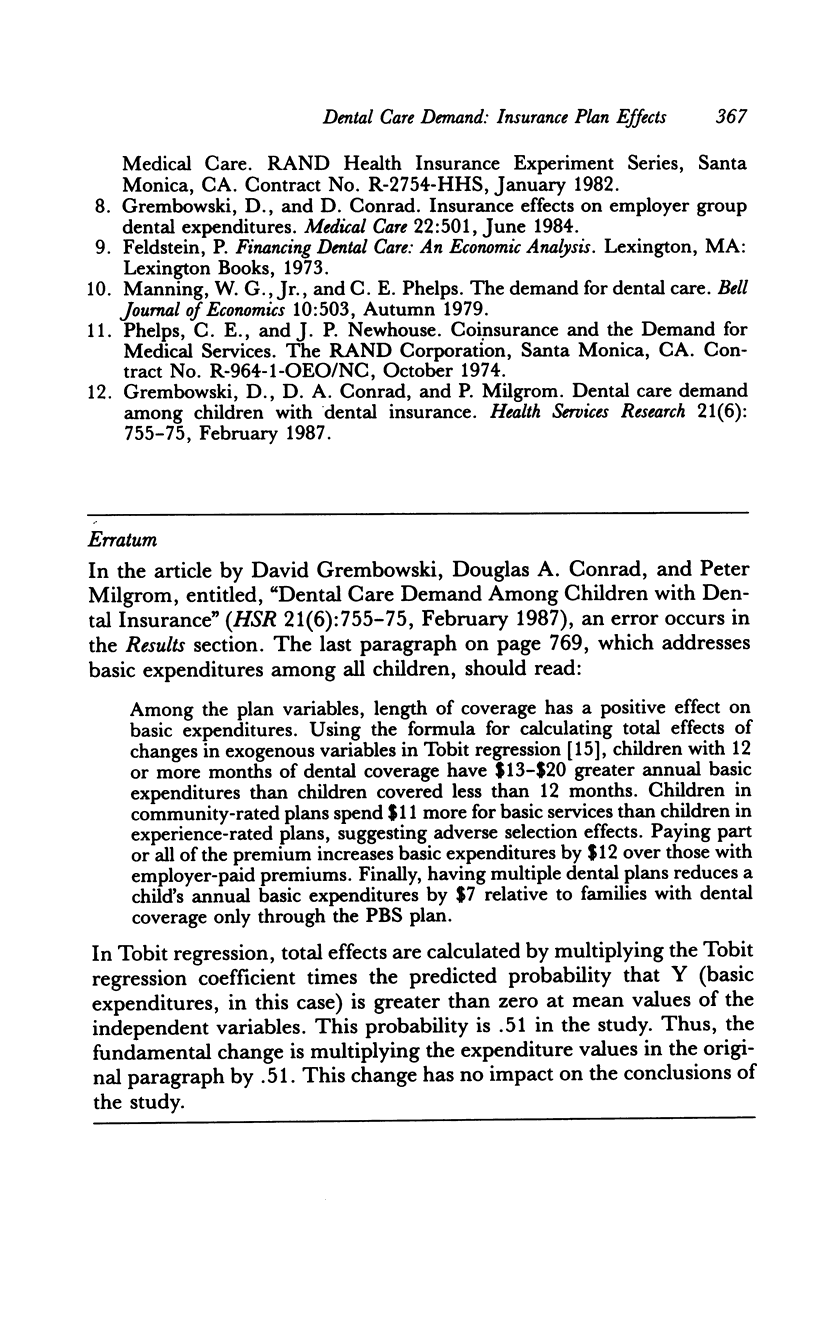
Selected References
These references are in PubMed. This may not be the complete list of references from this article.
- Conrad D. A., Grembowski D., Milgrom P. Adverse selection within dental insurance markets. Adv Health Econ Health Serv Res. 1985;6:171–193. [PubMed] [Google Scholar]
- Grembowski D., Conrad D. A., Milgrom P. Dental care demand among children with dental insurance. Health Serv Res. 1987 Feb;21(6):755–775. [PMC free article] [PubMed] [Google Scholar]
- Grembowski D., Conrad D. Insurance effects on employer group dental expenditures. Med Care. 1984 Jun;22(6):501–510. doi: 10.1097/00005650-198406000-00001. [DOI] [PubMed] [Google Scholar]
- Hu T. W. The demand for dental care services, by income and insurance status. Adv Health Econ Health Serv Res. 1981;2:143–195. [PubMed] [Google Scholar]
- Manning W. G., Bailit H. L., Benjamin B., Newhouse J. P. The demand for dental care: evidence from a randomized trial in health insurance. J Am Dent Assoc. 1985 Jun;110(6):895–902. doi: 10.14219/jada.archive.1985.0031. [DOI] [PubMed] [Google Scholar]
- Nikias M. K. Prepaid dental care: patterns of use and source of premium payment. Am J Public Health Nations Health. 1969 Jul;59(7):1088–1103. doi: 10.2105/ajph.59.7.1088. [DOI] [PMC free article] [PubMed] [Google Scholar]


